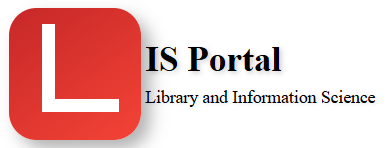Integrated Library System (ILS) Quiz
1. What does ILS stand for?
- A) International Library System
- B) Integrated Library System
- C) Internal Library System
- D) Institutional Library System
Answer: B) Integrated Library System
Description: An ILS is a software system used by libraries to manage their operations, including tracking items, orders, payments, and patrons.
2. What is the primary purpose of an ILS?
- A) To store library items digitally
- B) To manage library collections and patron services
- C) To organize library staff work
- D) To automate library management completely
Answer: B) To manage library collections and patron services
Description: ILS helps libraries manage all facets of library services including acquisitions, cataloging, circulation, and patron management.
3. Which of the following is a key feature of most ILS?
- A) A digital repository for books
- B) A system to track items owned and borrowed
- C) A system to manage library funds
- D) A web search engine for library catalogs
Answer: B) A system to track items owned and borrowed
Description: One of the main functions of an ILS is to keep track of items owned by the library and manage the lending process to patrons.
4. What is an OPAC in the context of ILS?
- A) Online Public Access Catalog
- B) Online Personal Access Catalog
- C) Official Public Access Center
- D) Offline Public Access Catalog
Answer: A) Online Public Access Catalog
Description: OPAC is the user interface of an ILS, allowing patrons to search for library materials online, check availability, and perform other actions related to their library accounts.
5. Which of the following is an example of an open-source ILS?
- A) Koha
- B) Circulation Plus
- C) ILS Pro
- D) LibWare
Answer: A) Koha
Description: Koha is an open-source ILS widely used by libraries across the world. It is freely available and allows customization to meet specific library needs.
6. What does the acronym MARC stand for in library systems?
- A) Machine Readable Cataloging
- B) Management of Accessible Resources and Catalogs
- C) Modern Archival Resource Classification
- D) Metadata and Access Resource Catalog
Answer: A) Machine Readable Cataloging
Description: MARC is a standard format used to represent bibliographic records in digital systems, enabling machine-readable cataloging.
7. Which of the following modules is NOT typically part of an ILS?
- A) Cataloging
- B) Serials Management
- C) Acquisitions
- D) Time Tracking
Answer: D) Time Tracking
Description: Time tracking is generally not a core module of ILS. Key modules include cataloging, acquisitions, and serials management.
8. What is the main advantage of using cloud-based ILS?
- A) High cost of maintenance
- B) Flexibility and easy access from anywhere
- C) Requires complex hardware setup
- D) More customized software
Answer: B) Flexibility and easy access from anywhere
Description: Cloud-based ILS allows library staff and patrons to access the system remotely, making it easier to manage library operations and services.
9. What is a key feature of an ILS module for circulation?
- A) Organizing library staff schedules
- B) Managing overdue notices and fines
- C) Categorizing library books
- D) Creating new catalogs
Answer: B) Managing overdue notices and fines
Description: A circulation module in an ILS is responsible for managing the borrowing and returning of library materials, as well as tracking overdue items and issuing fines.
10. Which of the following is NOT an ILS feature?
- A) Cataloging library materials
- B) Borrowing books
- C) Managing online user reviews
- D) Handling acquisitions and orders
Answer: C) Managing online user reviews
Description: While ILS systems can handle many aspects of library operations, managing online user reviews is generally not a typical feature of ILS.
